The benefits of worm castings extend far beyond growing healthy vibrant plants. Earthworm castings also benefit our soils and help to maintain a healthy Soil Food Web.
Healthy soils are vital for sustainable farming or gardening. One reason no-till and permaculture practices are important is that disturbing the soil breaks up the fungal hyphae and mycelium which are so crucial.
This article is going to dive deep into the top 10 benefits of worm castings. We will also talk about these benefits and explain the reasons “Why” they are important.
So, saddle up for a crazy ride into the wild world of worm castings and healthy soils.
What Are Worm Castings?
Worm castings are worm poop. Simple? Not really. In fact, not simple at all. Worm castings are very complicated and not completely understood even by scientists. However, the castings research is ongoing and our knowledge base increases every year.
One FACT about worm castings; there is no such thing as 100% worm castings. There will always be some amount of unprocessed organic material in a pile of worm casts. It is unavoidable and hard to measure.
So, the next time you see a claim of 100% worm castings, you should run the other way. No kidding! I will talk more about this later on.
The Definition of Worm Castings
Here is the proper definition: “Worm castings are stabilized organic matter that is produced by the interaction of worms and microorganisms under controlled conditions.”
This definition was provided by Dr. Norman Aroncon Ph.D. of the University of Hawaii-Hilo in a presentation.
Dr. Aroncon is a frequent presenter at the annual Vermiculture Conference in Raleigh, North Carolina.
He knows what he is talking about. Dr. Aroncon is also one of the world’s foremost academic researchers of worm castings and worm castings tea.
The worm castings definition is a long sentence with many terms. Let’s break this down a little to gain a better understanding of the meaning.
What is Stabilized Organic Matter?
Organic matter that has biodegraded from complex molecular structures to simple compounds and then into individual elements is said to be completely biodegraded.
Somewhere in the process between simple compounds and the disorganization into individual elements, the organic material becomes resistant or ‘stabilized’.
Clear as mud…I know. Let’s take a look at a couple of examples that are pertinent to our discussion.
Thermophilic Composting
Nature can take many years to compost or biodegrade organic matter. The process of thermophilic composting can speed this process up to a matter of days or weeks. This is your outdoor compost pile in simplistic terms.
You add nitrogen (greens, food scraps, manure, etc.), carbon materials (brown leaves, straw, dried grass, etc.), layer it in and add moisture. The microorganisms will feed on the organic matter and start breaking it down.
This microorganism activity creates great heat(up to 160 degrees F.). The heat will start to subside when the aerobic bacteria start to run out of oxygen.
This is when you turn your pile to introduce more oxygen. The heating process begins again. The bacteria need moisture, oxygen, and a food source to thrive.
When turning no longer produces heat with adequate moisture and oxygen, the thermophilic microorganisms have mostly died-off and the mesophilic bacteria (70-100 F.) take over the decomposition process. Your compost is becoming more stable.
The thermophilic heating actually accomplishes many good things. It kills many pathogens and weed seeds.
When your compost becomes crumbly, you can now add it to your soil in the form of stabilized organic matter that has limited amounts of bioactivity. This is a little simplistic but mostly accurate.
Mesophilic Composting
Worm composting takes place in the mesophilic range (70-90 F.) The worm bedding is a combination of different carbon materials.
The worm bin temperature is controlled by adding only small amounts of nitrogen materials at one time. Sometimes the nitrogen materials are even pre-composted (thermophilic) before introducing to a worm bin. This keeps the heat out of the thermophilic range.
Mesophilic composting can take a long time in nature but the composting worms speed this process up considerably. The worms are actually eating the mesophilic bacteria (aerobic and anaerobic) but slurp up the decomposing food source and bedding in the process.
You end up with stabilized organic matter that is strife with a diverse population of microorganisms.
Interaction of Worms and Microorganisms
The second italicized portion of the “worm castings definition” is also important to our discussion. The interaction of worms and microorganisms is tantamount to understanding worm castings.
Earthworms derive their nutrition from the various microorganisms that are consumed. However, as the food passes through a worm’s digestive system, earthworms add their own microorganisms in the process.
The result is worm castings have a higher population of microorganisms than the food that was consumed.
Controlled Conditions
Worm castings producers control the conditions in their worm’s habitat to make the worm composting process work. There is a myriad of options that are employed for various reasons.
Some examples: Bedding temperatures, moisture levels, type of composting worms, types of bedding materials, different food sources, and length of time before castings harvest all have an impact on the quality of castings (or lack thereof).
By far, these “controlled conditions” have the largest impact on the overall quality of the worm castings.
Did you know that you can create fungally-dominated worm castings by using certain bedding materials?
Did you know that you can make bacterially-dominated castings also?
Some worm castings producers are making “designer worm castings” for their customers. Certain crops are known to grow better with different types of castings. This is leading-edge science but will become the norm as more plant-specific research is done.
This all results from controlling the conditions that the earthworms are raised in.
Some Remedial Soil Science
The benefits of worm castings reach far beyond helping our plants grow. Some understanding of soil science is necessary.
Let me describe what healthy soil is and why it is so important.
Firstly, one teaspoon of healthy soil will contain BILLIONS of microorganisms.
Secondly, healthy soils will have adequate nutrient levels but not excessive.
Thirdly, healthy soil will have good tilth.
Fourthly, good moisture retention and also good drainage is a property of healthy soil.
Fifthly, the key to healthy soil is large amounts of organic matter. This consists of living organic matter, dead organic matter, and very dead organic matter (humus).
Why is Healthy Soil Important?
Let me throw out a few terms and see if any of these are familiar to you: degraded, farmed-out, erosion, nitrogen run-off, algae blooms in lakes, wind erosion, silt, pesticides, chemical fertilizers, irrigation, water contamination, fish kills, bees dying, low insect populations, mineral depletion, less nutrient-dense foods, drought conditions, loss of topsoil, compaction, and I could go on forever.
Have you heard of any of these terms? There is not one of those terms that apply to healthy soil but welcome to modern agricultural practices. Maybe it is time for a change?
To understand the importance of Healthy soil, let’s examine what Un-healthy soils bring to the table.
Well, to start…the entire list of terms above. Here are a few more BIG ones. Food Insecurity, poverty, climate change, and unsustainable development.
Unhealthy soil is a major contributor to climate change. Poor soil releases carbon which turns into carbon dioxide. This exacerbates the problem.
HEALTHY soil actually sequesters carbon and alleviates climate change. Some scientists believe that carbon sequestration in soil could actually stop climate change.
There is overwhelming evidence to support the need for healthy soil. So, let’s talk about the benefits of worm castings and how they can help.
Ten Benefits of Worm Castings for Soil
- Adds Organic Matter…Worm castings not only add organic matter to our soils but add “Living” organic matter. This increases the population of microorganisms in the soil.
- Increases the Cation Exchange Capacity…The CEC is a measurement of your soils fertility capacity. The higher your CEC…the more fertile your soil is or could become.
- Lowers or Increases Soil pH…Worm castings are near neutral pH. They can make acidic soils more neutral or alkaline soils more acidic.
- Improves Soil Aeration…Castings are granular and help to make aeration space in the soil. In fact, proper aeration is tantamount for healthy soil.
- Helps Soil To Absorb and Hold Water…Worm castings hold water like a sponge. They will increase moisture absorption for your soil and reduce drought problems.
- Provides Needed Nutrients in an Available Form…Worm casts provide plants with nutrients on an “as needed” basis in a readily available form.
- Reduces Soil Compaction…Worm castings help to form “soil aggregates” which alleviate compaction problems in your soil. This also increases the moisture-holding capacity and aeration of your soil.
- Reduces Soil Erosion…Soil that can absorb and retain water is much less susceptible to erosion.
- Improves the Soil Structure…Casts help to form soil aggregates. Worm castings applications along with organic compost materials can improve sandy or clay soils immensely.
- Reduces Soil Crusting… Loose friable soil that retains water well is much less prone to crusting.
Worm Castings NPK
No discussion of the benefits of worm castings is complete without addressing the NPK designation.
NPK… N = Nitrogen P = Phosphorous K = Potassium
The NPK designation is a synthetic or chemical fertilizer measurement. This is what they provide. This is ALL they provide.
Here is the problem. If I want to sell my worm castings as a fertilizer (which they are), my state regulators require me to have an NPK designation on my label. Most worm castings will test 1-0-0 on an NPK test.
Chemical fertilizers are not in a plant-available form. They need to be converted and much is lost in the process. That is why there is always so much excess with chemical fertilizers. They also do not provide many things that healthy plants need to grow. (plant hormones, humic acids, etc.)
However, worm castings work completely differently than chemical fertilizers. They are not even in the same class.
It is an apples and oranges comparison and complete ignorance on the part of the fertilizer regulators. (maybe)
Worm Castings Nutrient Analysis
Think of worm castings as an NPK producer. You add worm castings to your soil and the lifecycle of the microorganisms produce nitrogen, phosphorous, and potassium for your plants.
They also produce plant hormones, humic acids, and other things. But, they produce this in a plant-available form, so your plant does not require that much. It is a two-way symbiotic relationship with your plants and the soil.
A better test for worm castings is a biological lab report for bacteria, fungi, amoebas, humic acids, plant growth hormones and the like
Most reputable worm castings producers have batches of their castings tested and can provide the results on demand.
This lab test result is probably not important if you are a gardener. However, if you are a grower of a certain crop (ie.tomatoes, cannabis, etc.) and know certain types of worm castings work well for you, it is vital information.
My suggestion is to work with a worm castings producer and ask for the lab test results.
This information can not be on the label or attached in many states. Why?
Well, Big Ag is worth Billions and worm castings producers are not. You decide.
Using Worm Castings
There has been much research done on the most efficient use of worm castings. The results tend to be plant-specific because that is the way research is done.
If you are a commercial grower, you will probably have to do your own testing for optimum results.
Here are some rules of thumb though:
Potting Mixes: Add 20% worm castings by volume. Example: 1-gallon of worm castings to 4 gallons of potting mix. Do NOT use a potting mix that has chemical fertilizers in it. Read the label…it will say.
Transplants in the garden: 1/2 cup in the bottom of the planting hole for smaller plants. 1 cup for larger plants. ie. tomatoes, green peppers, summer squash, and the like.
Seeds in a row: We like to make a little deeper row and put about a half-inch of castings in the bottom. Plant your seeds and cover with dirt. Sweet corn would require a little more but most row vegetables will be fine with a half-inch.
Seed Starting: We find that worm castings are not really required for seed starting. However, soaking your seeds before planting in a weak dilution of worm castings tea, promotes better germination rates and plant health.
Compost Tea: Compost tea can be made with worm castings to give some quick energy to growing plants. The addition of tea can also add increased microbial biomass to your soil.
You can always side-dress your plants with worm castings at any time. Just remember, the microorganisms will die if exposed to UV rays (Sun), so be sure to cover the castings with an inch or so of soil.
Growing in Pure Worm Castings
Can you grow your plants in pure worm castings? NO! Researchers tried this and always had bad results…on everything.
This baffled them for years until the testing methods became better. They found that plant growth and health exhibited a Bell Curve.
It would get better(with more castings), level off, and then decline. They were mystified.
They finally discovered that excess plant-growth hormones were the culprit. Too many worm castings would accelerate the growth to a pace that the plant could not recover from. It would eventually succumb and die. Many herbicides work on this same principle.
So, 20% by volume seems to be the “Sweet Spot”.
The Disadvantages of Worm Castings
I have expounded the virtues of worm castings for about 2000 words. What about the other side of the coin? Nothing is perfect. Worm castings are no different.
- Time: It takes time to create quality worm castings. 90 days is the minimum and it may take up to a year depending on your system. You can purchase them which leads to number two.
- Cost: Worm castings certainly cost more than chemical fertilizers. However, worm castings are on the cheaper end of organic fertilizers. You will have to decide what is more important.
- Scalability: It is easy to produce small amounts of worm castings. (50 gallons per year) It is a much harder and very expensive investment to produce large amounts of worm castings. Much time, investment, operational labor, and marketing are needed to be successful. There are plenty of risks involved.
There is absolutely no downside to growing with worm castings. I would put worm castings up against any fertilizer (chemical or organic) for plant health and yield. They also improve your soil health immensely.
Benefits of Worm Castings Summary
We have talked about the many benefits of worm castings. Worm castings are a great fertilizer for your plants but also very good at achieving or maintaining healthy soil. In fact, creating a healthy soil may be the greatest benefit of worm castings.
Healthy soil was discussed and how important this has become to everybody.
The top ten benefits of worm castings were also presented.
We discussed worm castings NPK and also the proper nutrient analysis that should apply to worm castings.
Worm castings usage was covered and some handy rules of thumb were explained.
Finally, we talked about some of the disadvantages associated with worm castings.
I covered a lot of material in this article. There are a lot of links (internal and external). If you would like more information on a particular topic, please click through the links to learn more.
As always, feel free to comment or ask questions. We love to hear from our readers!

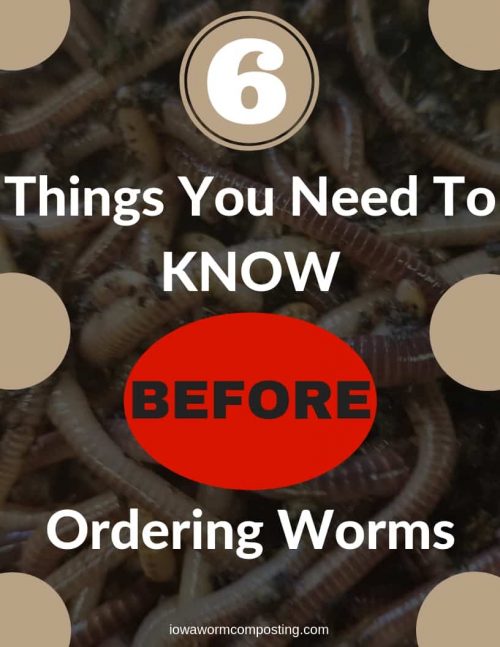

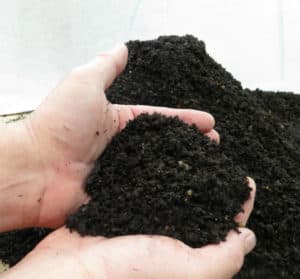
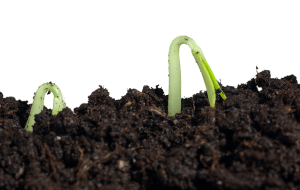
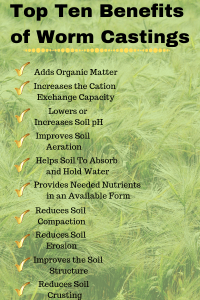


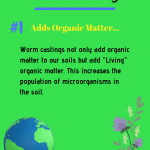
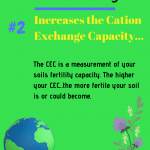
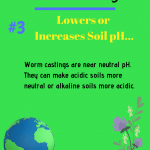
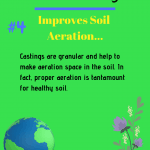
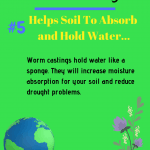
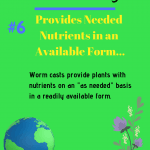
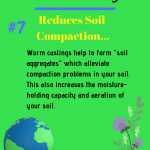
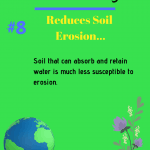
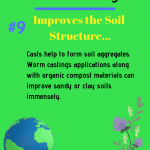
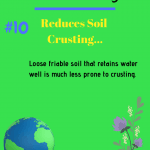
liked the information, one of best sites that I have seen so far.
I am a worm farmer and I believe your information should inspire many more people to take an interest.
good job!
Hi Pat, I am glad that you enjoy our website. We also have a Youtube channel with some informative videos. You can find it here: https://www.youtube.com/channel/UCFB7Eok327Z7cc0z15vhy8A Thank you for your support. Rick
Hello I am from Trinidad and Tobago. I have an earthworm farm and have started suppling garden shops. I want to thank you for this info since it helps me to clarify what information i put on my label. I really want to put out as accurate as possible information. Thanks again!
Hi Dexter, I am happy that you get some benefit from my website. I also have a Youtube channel that has some informative videos. You can find it here: https://www.youtube.com/channel/UCFB7Eok327Z7cc0z15vhy8A Thank you for your support. Rick
Hi Rick,
Dave here from New Zealand. I have been looking at growing my plants in biggish outdoor pots (around 50 litre). I have been looking at worm castings and am about to use a 20/80 mix. I noted that you stated “Do Not use a potting mix that contains fertilizer”. Why is that?
I am using organic potting mix by a company called ‘Daltons’ it contains ‘Nufert’.
Plant nutrients are injected into Zeolite granules through a special “charging process”. This protects added nutrients from leaching, providing a longer term, consistent supply. Plant roots then extract the nutrients from the Zeolite as the plant grows. This prevents damage to fine roots, making NuFert safe in any gardening situation.
Would it be safe to use this potting mix?
Many Thanks
Dave
Hi Dave, I was referring to chemical fertilizers that are common here in the USA. This is found in most of our potting mixes. That should not be used with worms. Your fertilizer sounds different than that but I have no experience with that particular type. You should test it with a small amount of worms before using it on a grand scale. This is pretty good advice for using any new food or bedding source that you are not sure about. Always test. Rick
My question is, how do I get my worms to stop barking at me?
Love the article. I think it’s an extremely important point that not nearly enough people are aware of: your supposed to feed your soil, not your plants. Just like we don’t feed our worms, we feed our worms’ food…
I’ll rephrase that. We don’t feed our worms, we feed the things that the worms eat.
Thanks for a great article. Realized a mistake I was making. Been leaving castings exposed when planting new seed. I might have a better season now and I appreciate it.
I am happy that you read the Post and received some value. Thanks for reading!
I am feeding my worms several hundred pounds (maybe more than 1000 pounds of organic cooking and table scraps that has reduced to 40 gallons.
My question is: going forward, how many gallons of fresh riced farmers market scraps are needed to have 1 gallon of castings?
A rough rule of thumb is 4 to 1 food for castings. Example: 4 pounds of food for 1 pound of castings. This entirely depends upon the water content of the food though. Drier food will yield more castings. Thanks for stopping by. Rick
Rick, that was outstanding! Thank you for the booklet as well as the YouTube link.
I’m 3 months (maybe 4 now) into worm and worm casting production on a small scale (home business) in Northwest Florida.
Finding ‘accurate’ information amongst the plethora of ‘opinion’ has been a chore. This site was a great find!
Thanks again!
Thanks for visiting.
Hi I am in Toronto and just watched an amazing program on worm farming. I have small flower garden and would like to use worm castings now. I use sea compost every year on my beds. Is that ok with worm castings? If you say 80/20 does that mean I mix it together before I disperse or can I spread the worm castings and then spread the compost on top? OR do I need the sea compost at all?Thanks Lynn
Hi Lynn, Compost can be used with worm castings. In fact, any organic matter that you add will help the worm castings work better. We like to keep the castings in the top 6 inches of your soil or planting mix. Be sure to cover with some compost or soil because UV rays will kill the beneficial bacteria in castings. Thanks for stopping by. Rick
One thing the author stated that is incorrect in most cases is that
Producing a small amount of worm castings, like 50 gallons per year is easy but producing bigger amounts takes a lot more time, labor, investment money etc.
Actually it doesn’t.
Last year I produced 490+/- a few, gallons of worm castings (approx 1 yard, 900-1,200lbs)
In a worm bin (inside dimensions)
3ft wide x 8ft long & 32 inches tall.
Granted it did take about 6- 8 months for my worm population to grow big enough to handle that size bin at max production rates.
But since then (over the last year) they are eating and pooping at full speed.
What’s the extra cost, labor time etc. from a smaller stackable worm bin type method (50 gallons of castings per year)
To the size bin I mentioned above.
1. If you can use a drill & or hammer nails & decently build the bin yourself, the cost is under $100-$200 bucks or less if you’re savvy.
My bin is 2×4 frame with some old unused plywood & osb I already had for the walls & bottom. I lined the inside of the bin with 1½ inch styrofoam insulation & made a top for the bin out of another piece of 1½” styrofoam.
2. As far as the extra cost of worms, there isn’t one if you already have a small worm farm. Transfer your existing worms into your new bigger bin & start feeding them, they will approx double in population every three months. It won’t take long under proper conditions to get up to max production.
3. Yup, you’re gonna need more food to feed a bigger population of worms in a bigger bin size.I get free manure from horse stables etc & make my own compost adding table scraps, lawn clippings & all the stuff works like to eat…and I was already doing that for the smaller size worm farm, so now I just get more when I go.
(Sure, it will take a little extra labor to get the bigger amount you’ll need for the bigger bin than a small bin But it’s a nominal amount of time.
4. You’re using more “food” to feed a bigger bin so it’ll take a few extra minutes feeding the bigger bin amount than a smaller one but you still feed them at the same intervals you were already feeding them at in the smaller bins.
Lastly, the Only real addition of actual labor is whenever you harvest your castings, your obviously harvesting a lot bigger amount & depending on your system of harvesting there will be added labor time when harvesting. (But I’m talking an extra
few hrs Total labor to harvest 500 gallons of worm castings per year as opposed to 50 gallons per year.
Anywho…
Hope some of that info helps some of y’all out.
Make sure you have a Great day!
You have made some very good points. Hopefully this will help our readers that have aspirations of more castings production. Thanks for the helpful advice.
Thank you for the valuable information
Thank you for visiting!